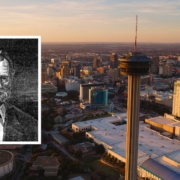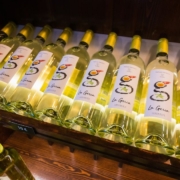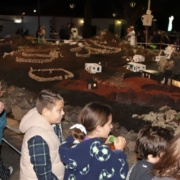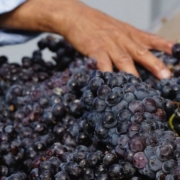Did you know that the historic streets of San Antonio, Texas, were once walked by a mayor from Teguise? A little-known chapter of Lanzarote’s history, stretching back almost three centuries, reveals a deep and living connection between the island and the United States, particularly in Texas and Louisiana.
It’s a story of families who crossed the Atlantic in search of opportunity, taking their culture with them and leaving a legacy that can still be explored on the island today.
The story begins in the era of Christopher Columbus. The Canary Islands were the final known landfall for his ships before the journey into the Atlantic unknown. These stopovers were crucial for stocking up on seeds, animals, and recruiting Canarians who would become some of the first settlers in the New World.
To understand the scale of this history, one need only visit Teguise, the old capital of Lanzarote. In the 15th century, it was the island’s economic heart, its prosperity reflected in the palatial and stately architecture that still defines the town. A stroll through its cobbled streets and squares, which preserve the original layout from the period, is a step back in time. Key sites include the 15th-century Church of Nuestra Señora de Guadalupe, a colonial-style gem.
For a more dramatic glimpse into the past, the Castillo de Santa Bárbara – a fortress that witnessed pirate raids between the 15th and 18th centuries – now houses a museum. For the truly adventurous, the pages of María José Tabar’s 2015 book, Piratas de Leyenda, bring to life the chilling history of the Callejón de la Sangre (Alley of Blood), named for the 1586 massacre by Morato Arráez.
This transatlantic exchange wasn’t just about people; it was about survival. The ships that stopped here loaded their holds with Lanzarote’s resources: wheat, barley, chickpeas, figs, and the island’s resilient goats, prized for their adaptability and milk production. These products, part of the “Columbian Exchange,” were unknown in the Americas before their introduction.
The good news is that this agricultural heritage is not just history. The island has preserved its traditional crops, as seen in the stunning wine-growing landscape of La Geria and the unique terrain of El Jable. Today, we can still taste this legacy in the island’s wonderful variety of artisan goat’s cheeses and other local delicacies. Visitors can explore this further at the Bodegas El Grifo, the oldest winery in the Canaries.
The most direct human link to the US was forged by a royal decree. The 1678 “blood tribute” stipulated that for every hundred tons of goods exported from the Canaries, five families had to embark for America. This policy led to the settlement of Louisiana and Puerto Rico and the founding of cities like Montevideo and San Antonio de Béjar -modern-day San Antonio, Texas.
In a remarkable piece of local history, the first mayor of that fledgling Texan settlement in 1731 was Juan Leal Goraz, a native of Teguise.
This incredible story is meticulously documented in the book Estadounidenses con Pasado Lanzaroteño by José Juan Romero Cruz, which reconstructs Lanzarote’s role in over 40 historical milestones in the Americas.
Today, the legacy is kept alive by associations like the Canary Islands Descendants Association and has been formally renewed with a recent twinning agreement between Lanzarote and San Antonio, strengthening cultural, economic, and tourist ties for the future.











Leave a Reply
Want to join the discussion?Feel free to contribute!